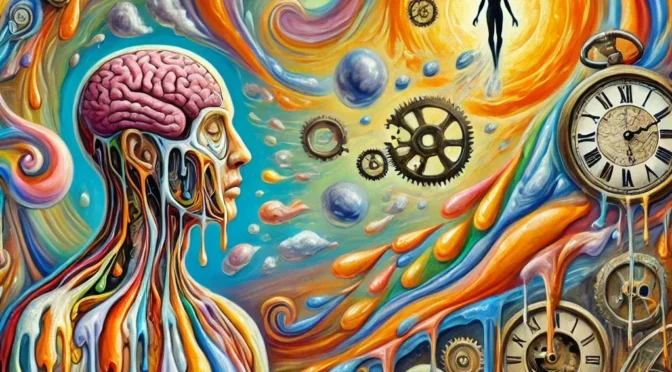AUdHD: Navigating Life with Autism and ADHD
Having both autism and ADHD (referred to as AUdHD) creates a unique experience with overlapping challenges and strengths, which can significantly affect diagnosis, quality of life, and daily functioning. Individuals with AUdHD often face more hurdles in compensating for their neurodivergent traits because both conditions influence executive functioning, emotional regulation, social skills, and sensory processing in distinct yet interconnected ways. Understanding how these two conditions interplay is crucial for grasping the complexities of living with AUdHD.
1. The Intersection of Autism and ADHD
While autism and ADHD are distinct neurodevelopmental conditions, they share several overlapping traits, which can make it difficult to differentiate between them. Some of these shared traits include:
- Executive dysfunction: Difficulty with planning, organizing, and completing tasks on time.
- Emotional regulation issues: Struggles with managing and expressing emotions appropriately.
- Sensory sensitivities: Over- or under-sensitivity to sensory stimuli, such as loud noises, textures, or bright lights.
- Social challenges: Trouble understanding social cues, forming relationships, and maintaining social interactions.
However, there are key differences that add complexity to a dual diagnosis. For instance, while ADHD is often characterized by impulsivity and hyperactivity, autism is associated with a strong need for routine and predictability. The co-occurrence of these traits in AUdHD individuals can create an internal tug-of-war, leading to more intense internal conflicts and challenges.
2. Impact on Diagnosis
Diagnosing AUdHD can be particularly challenging for several reasons:
- Overlapping Symptoms: Many traits of ADHD and autism overlap, such as difficulties with attention, impulsivity, and social skills. This can lead to misdiagnosis, where one condition is identified but the other is overlooked. For example, hyperactivity or inattentiveness might be attributed to ADHD, while the underlying autism is missed.
- Masking: People with AUdHD often engage in “masking,” a coping mechanism where they hide their neurodivergent traits to fit into societal expectations. Masking can make it harder for clinicians to see the full picture and may delay or complicate the diagnosis.
- Delayed Diagnosis: AUdHD individuals, especially those assigned female at birth, are often diagnosed later in life because of societal biases and the internalized pressure to appear “normal.” The interplay of both conditions can obscure the full extent of difficulties, making it hard for professionals to see how deeply both autism and ADHD affect the individual.
3. Compensatory Strategies and Cognitive Load
Individuals with AUdHD often need to develop more compensatory strategies to manage their daily lives. Compensating for both autism and ADHD can be exhausting because both conditions create different sets of challenges that must be navigated simultaneously.
- Compensation for Autism: To cope with the social and sensory demands of daily life, autistic people may engage in extensive planning, develop strict routines, or avoid certain sensory triggers. This requires significant cognitive energy to maintain, even if these strategies appear to make life more manageable.
- Compensation for ADHD: ADHD often impacts focus, time management, and emotional regulation, requiring the use of external aids like alarms, reminders, and strict schedules. Staying on task and remaining organized takes extra effort, which can be draining in itself.
For individuals with AUdHD, compensating for both at the same time increases the cognitive load and reduces available mental energy. For example, they might need to stay hyper-aware of social rules due to autism while also fighting constant distractions caused by ADHD. As a result, daily tasks can take much more effort, leading to quicker burnout and a lower threshold for stress.
4. Reduced Energy and Burnout
Managing both autism and ADHD requires significantly more mental energy than managing either condition alone. This is because:
- Executive Dysfunction is Amplified: Both autism and ADHD affect executive functioning, but in different ways. Autistic individuals may struggle with flexibility and changes in routine, while ADHD causes difficulties with focus, organization, and prioritization. Combined, these impairments create a constant challenge in managing daily life, leaving less mental energy for other activities.
- Sensory Overload and Distraction: Sensory processing issues are common in autism, where overstimulation can lead to shutdowns or meltdowns. ADHD adds a layer of distraction to this, making it harder to filter out irrelevant stimuli. This constant battle between sensory overload (autism) and a lack of focus (ADHD) can leave individuals feeling mentally drained.
- Emotional Regulation: ADHD often causes emotional impulsivity, making it harder to control responses to situations. Autistic individuals, on the other hand, may have difficulty processing and understanding emotions. Together, these traits lead to emotional exhaustion, as individuals with AUdHD may experience heightened reactions to daily stressors.
- Compensation Fatigue: Over time, the need to constantly manage both conditions can lead to burnout, a state of emotional, mental, and physical exhaustion. This is particularly common in AUdHD individuals because they are often forced to work harder to keep up with societal expectations, leaving them with little energy for self-care or relaxation.
5. Quality of Life and Daily Challenges
The combination of autism and ADHD affects various aspects of daily life, from relationships to work, school, and personal well-being. Key areas where AUdHD impacts quality of life include:
- Social Interactions: While autism can make social situations uncomfortable or confusing, ADHD can add impulsivity, which may result in saying things without considering social norms. This combination can lead to misunderstandings, social rejection, or difficulties in forming close relationships.
- Work and School: AUdHD individuals may excel in structured environments where routines and predictability are key, but struggle with multitasking, time management, and shifting focus—common challenges in workplaces and classrooms. Both conditions can make it hard to stay on top of tasks, leading to frustration and a feeling of inadequacy.
- Self-Esteem: AUdHD individuals are often highly aware of their difficulties, which can negatively impact their self-esteem. Constantly comparing themselves to neurotypical peers, or even to autistic or ADHD peers who may only have one condition, can lead to feelings of inadequacy and low self-worth.
- Emotional Overload and Burnout: The emotional toll of managing both conditions can be significant. Burnout is common in individuals with AUdHD, as the constant need to balance both ADHD and autism-related challenges leads to physical and emotional exhaustion.
6. The Importance of Tailored Support
Individuals with AUdHD require support that is tailored to the unique interplay of both conditions. Some key strategies include:
- Energy Management: Recognizing the importance of conserving mental energy is crucial. This means setting boundaries, prioritizing tasks, and creating a balance between activity and rest. Developing self-compassion is also essential, as individuals with AUdHD may need more time to complete tasks than others.
- Sensory Accommodations: Because of the sensory sensitivities caused by autism, it’s important to create sensory-friendly environments. Noise-canceling headphones, fidget tools, or low-stimulation areas can help.
- Executive Functioning Aids: External support systems such as reminders, calendars, visual schedules, and alarms can assist with time management and task organization, helping to alleviate some of the cognitive burden.
- Emotional Regulation Strategies: Mindfulness, cognitive behavioral therapy (CBT), or dialectical behavior therapy (DBT) can provide tools for managing impulsivity and emotional dysregulation, which are common in ADHD. Tailoring these therapies for both autism and ADHD is important to address the dual impact.
Conclusion
Living with both autism and ADHD (AUdHD) creates a unique set of challenges that can complicate diagnosis, increase the need for compensatory strategies, and contribute to energy depletion and burnout. Understanding the complex interplay between these two conditions is essential for creating tailored support systems that improve the quality of life for those navigating this dual diagnosis. With the right accommodations and understanding, individuals with AUdHD can better manage their daily lives and thrive, despite the added challenges they face.











